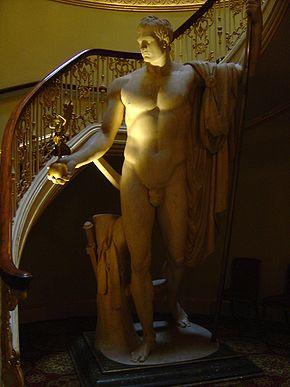David’s “Napoleon Crossing the Alps” is a masterpiece because it gives the true picture of Napoleon Bonaparte. Jacques-Louis David portrays Napoleon as a powerful and flamboyant leader. The leader is confident as the Emperor of France. According to this painting by Jacques-Louis, Bonaparte is a powerful person who can cross the Alps with great courage. He is also a leader who can defeat every Austrian soldier. David’s painting shows Napoleon riding a strong mane. Although this was not the case with Napoleon, the painting achieved its purpose because the emperor was always confident in his leadership. This strength made it easier for him to defeat many armies across Europe.

This portraiture by Jacques-Louis David informs the viewer about Napoleon’s courage. The artist believed that Napoleon was a powerful person. David was happy with Bonaparte’s leadership style and ability to command his powerful French army. The artist also appears to have supported the emperor’s political philosophy. His leadership ability made it easier for the French army to win many battles. This portraiture explains why David was pleased with Napoleon’s capabilities and strategies. Napoleon’s boldness was critical towards transforming the future of France. The viewer can use this painting by David to learn many things about Napoleon Bonaparte. The piece of art will always inform the world about the courage and power associated with this leader of the French army.
Antonio Canova’s “Napoleon as Mars the Peacemaker” presents something different to the viewer. Napoleon Bonaparte expected a full-length sculpture from Antonio. At the time, Antonio Canova was one of the best artists and sculptors in Europe. Antonio was not happy with the Napoleon’s leadership strategy. According to Antonio Canova, the French had become indecent. He also resented Napoleon for looting hundreds of Italian treasures. Napoleon wanted a sculpture depicting his uniform. However, Antonio explained why it was appropriate to depict him as a pacifying god of war. Canova was not ready to give Napoleon what he wanted. Antonio depicted Napoleon as a nude giant of over three meters.

Antonio’s sculpture carried a hidden message to Napoleon. Canova wanted Napoleon to embrace peace instead of war. Canova was also unhappy with the leader because of his malpractices and greed. The artist was also unhappy with Napoleon’s political philosophy. This masterpiece tells us many things about the artist’s attitudes towards Bonaparte. The artist wanted a peaceful society that did not embrace war. He was against the French for invading his country. Napoleon decided to hide the piece of work from the public because it was unpleasing. The portrait resurfaced after the famous Battle of Waterloo.
Canova’s “Napoleon as Mars the Peacemaker” and David’s “Napoleon Crossing the Alps” are two powerful masterpieces. Many people expected the two artists to produce the best works of art and glorify the emperor for his abilities and strengths. However, David was the only artist who achieved this goal. Antonio Canova decided to produce a different masterpiece. The sculpture depicted Napoleon as a god of peace. This was something unexpected thus making it impossible for the artwork to achieve its goal. Antonio was not happy with the people of France. This fact explains why he decided to foul the emperor by producing a nude sculpture. In conclusion, these two masterpieces inform the viewer about the beliefs and attitudes held by different people towards the emperor.